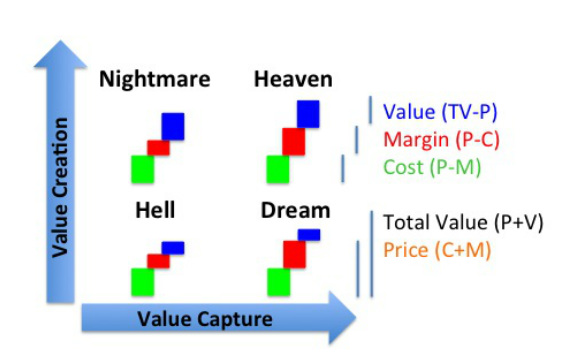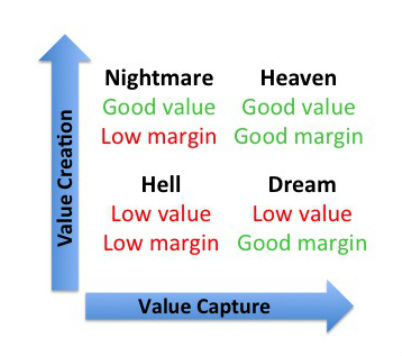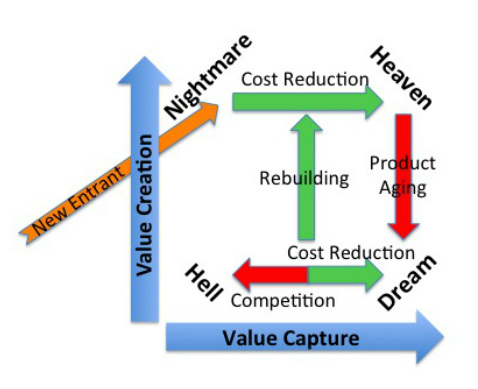|
www.Hexagon-Innovating.com
I really like the business term “to appropriate value,” which means to secure or collect on the value of something. Appropriating business value is generally broken down into two sequential steps: value creation and value capture which correspond to product (or service) development followed by marketing and sales. I recently came across an interesting construct from Professor Paul Verdin of Solvay, KUL and INSEAD and his colleagues on the web (click here and here). In this construct, termed the VC2 Matrix, value creation and value capture are shown on separate axis (redrawn below). Products in each of the resulting four quadrants can be described in terms of the relationship between their cost, margin (or price) and net (or total) value to the customer. For example, if value creation is high but value capture is low, the result which they term “Nightmare” is a product with significant value to the customer but which generates only low margins. This inability to capture strong margins could be a result of high costs and/or strong price competition. The high cost scenario is often the position early-stage companies and new products find themselves in before economies of scale can be realized. As for all models, we can only appropriate their value (pun intended) if they inform our future actions. Here too Prof. Verdin et al. outline strategies to move products from the three unfavourable positions to “Heaven,” through building additional value and/or cost cutting. They also describes how products can fall from “Heaven” and move to “Hell,” through the competition eroding added-value and prices. The three available levers are your cost structure, pricing strategy and customer value. Improving your cost structure can involve economies of scale, outsourcing, building for manufacturability (and service), improving productivity and automation. Improving your value proposition involves differentiation, including through new offerings, service, quality, bundling of products and services, and patent protection. Your pricing strategy and the resulting margins are squeezed between and are highly dependent on the other two levers, as well as the competitive response. A combination of advertising, branding, reputation, promotions, loyalty programs, lock-ins, convenience, and financing can be applied to differentiate on price alone.
© Duncan Jones (2013) All rights reserved
0 Comments
Leave a Reply. |
AuthorDuncan Jones Archives
May 2022
Categories |




 RSS Feed
RSS Feed